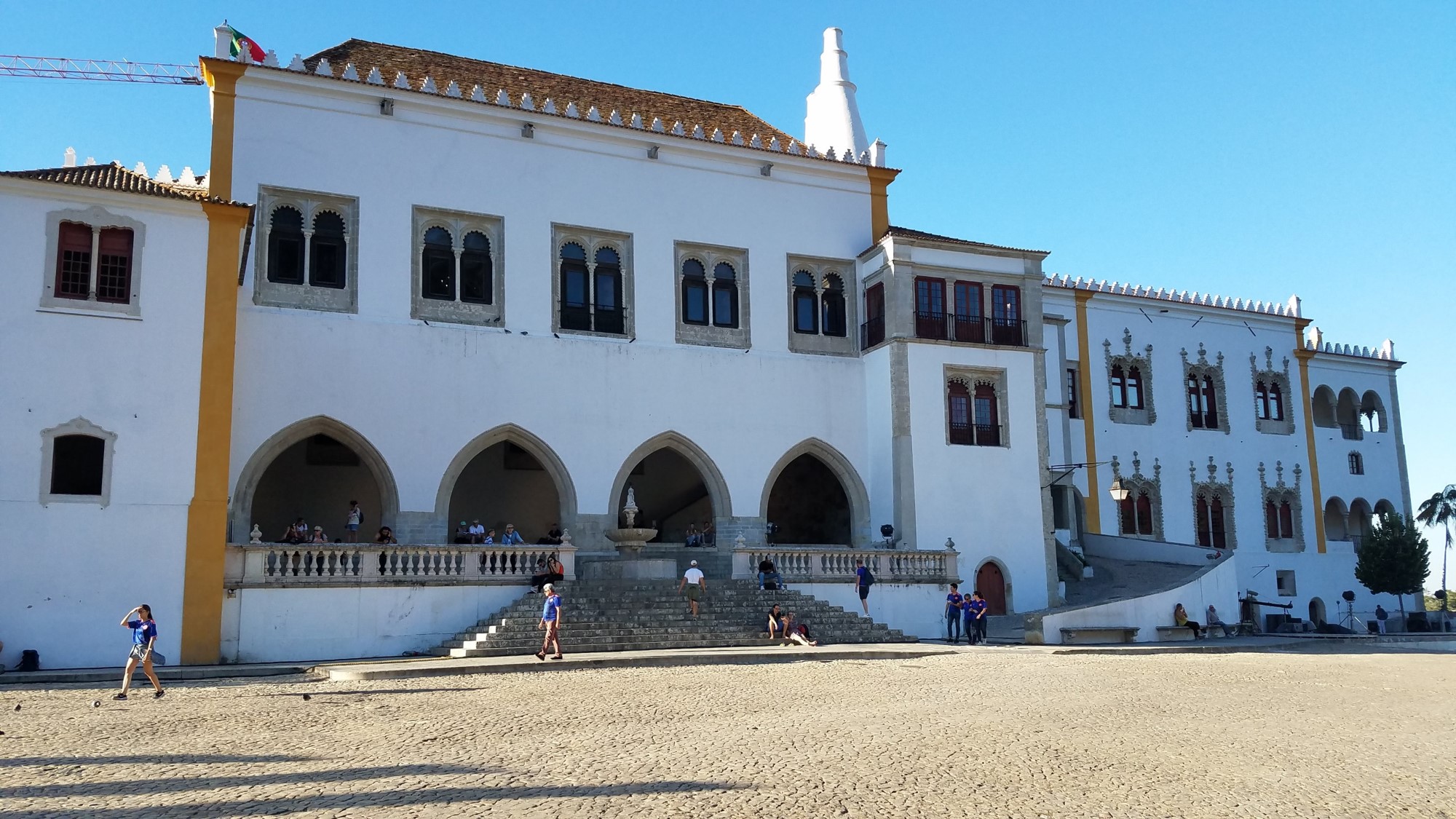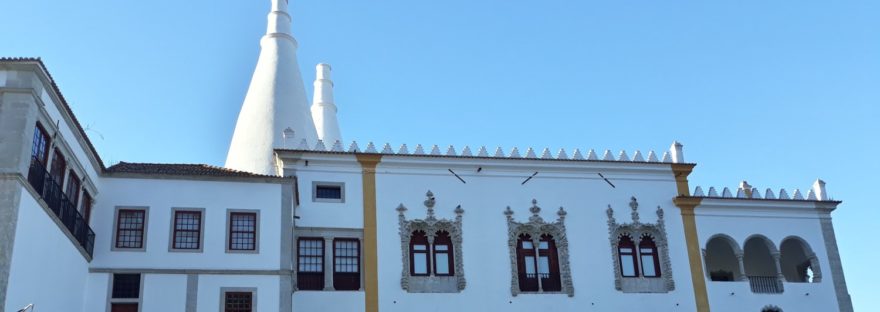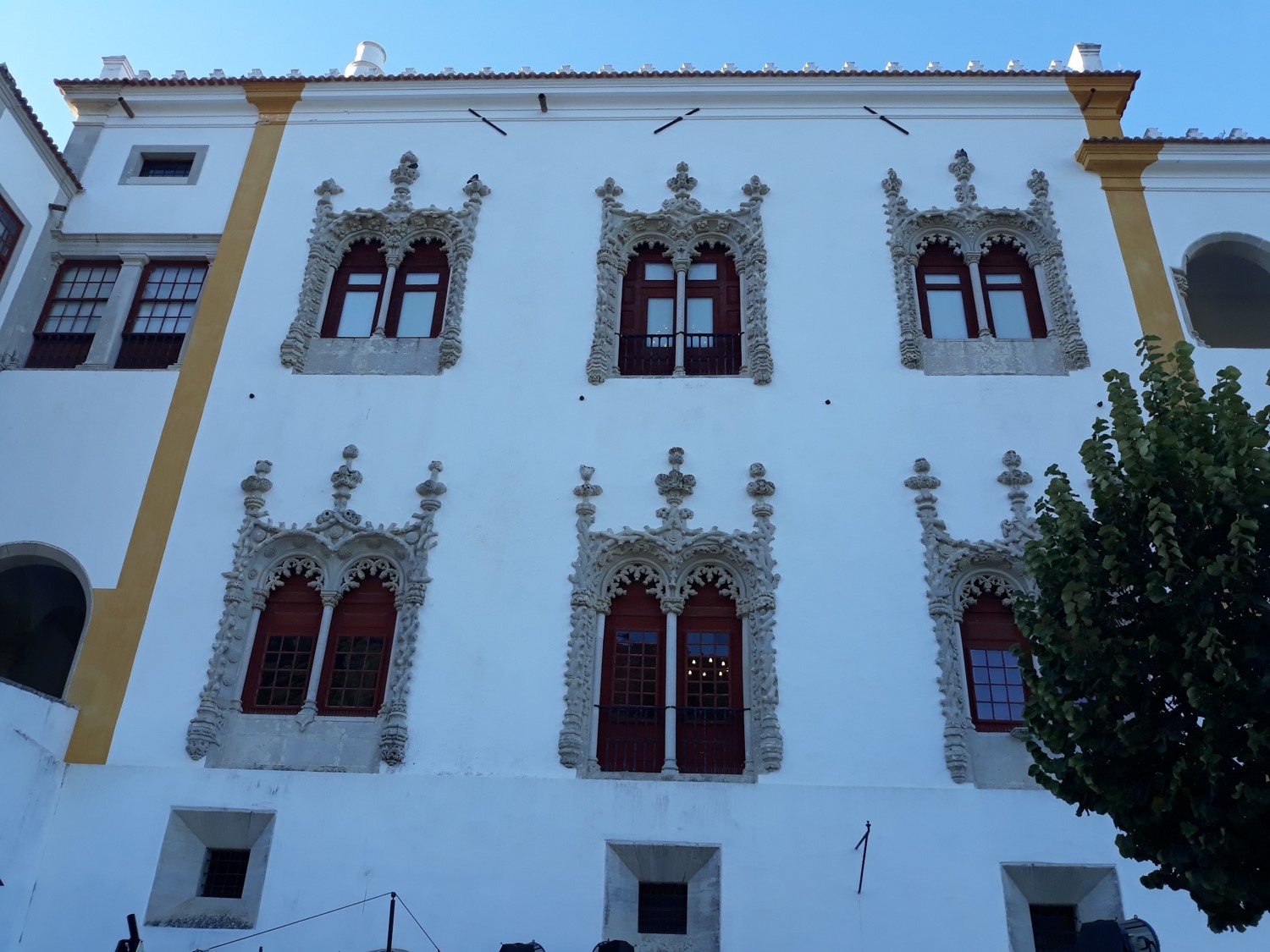 In the São Martinho Ward rises the “Palácio da Vila” better known as the National Palace of Sintra, Portugal. It was originally an urban palace of the sixteenth century and today has become one of the most iconic buildings of Sintra.
In the São Martinho Ward rises the “Palácio da Vila” better known as the National Palace of Sintra, Portugal. It was originally an urban palace of the sixteenth century and today has become one of the most iconic buildings of Sintra.
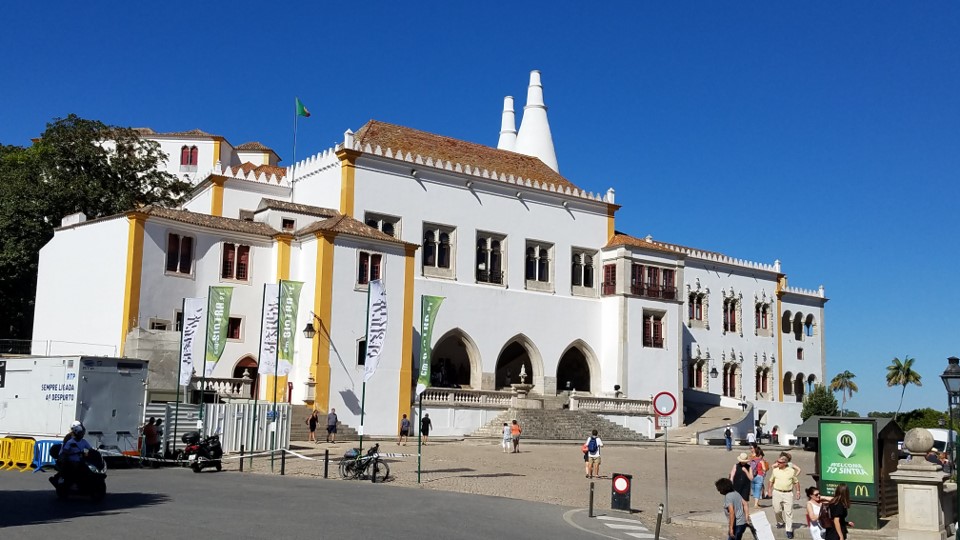 This palace presents several architectural styles: medieval, Gothic, Manueline, Renaissance and romantic. The structure is considered an example of organic architecture. Although it would seem to be a single structure, the reality that it is a set of buildings from different eras, thus the different architectural styles observed. However, some say that the true origin in terms of the construction of this palace dates to the eleventh century, during the occupation of the Moors. In fact, the Moorish influence is noticed with the palace’s location, its courtyards, the arched windows and other details.
This palace presents several architectural styles: medieval, Gothic, Manueline, Renaissance and romantic. The structure is considered an example of organic architecture. Although it would seem to be a single structure, the reality that it is a set of buildings from different eras, thus the different architectural styles observed. However, some say that the true origin in terms of the construction of this palace dates to the eleventh century, during the occupation of the Moors. In fact, the Moorish influence is noticed with the palace’s location, its courtyards, the arched windows and other details.
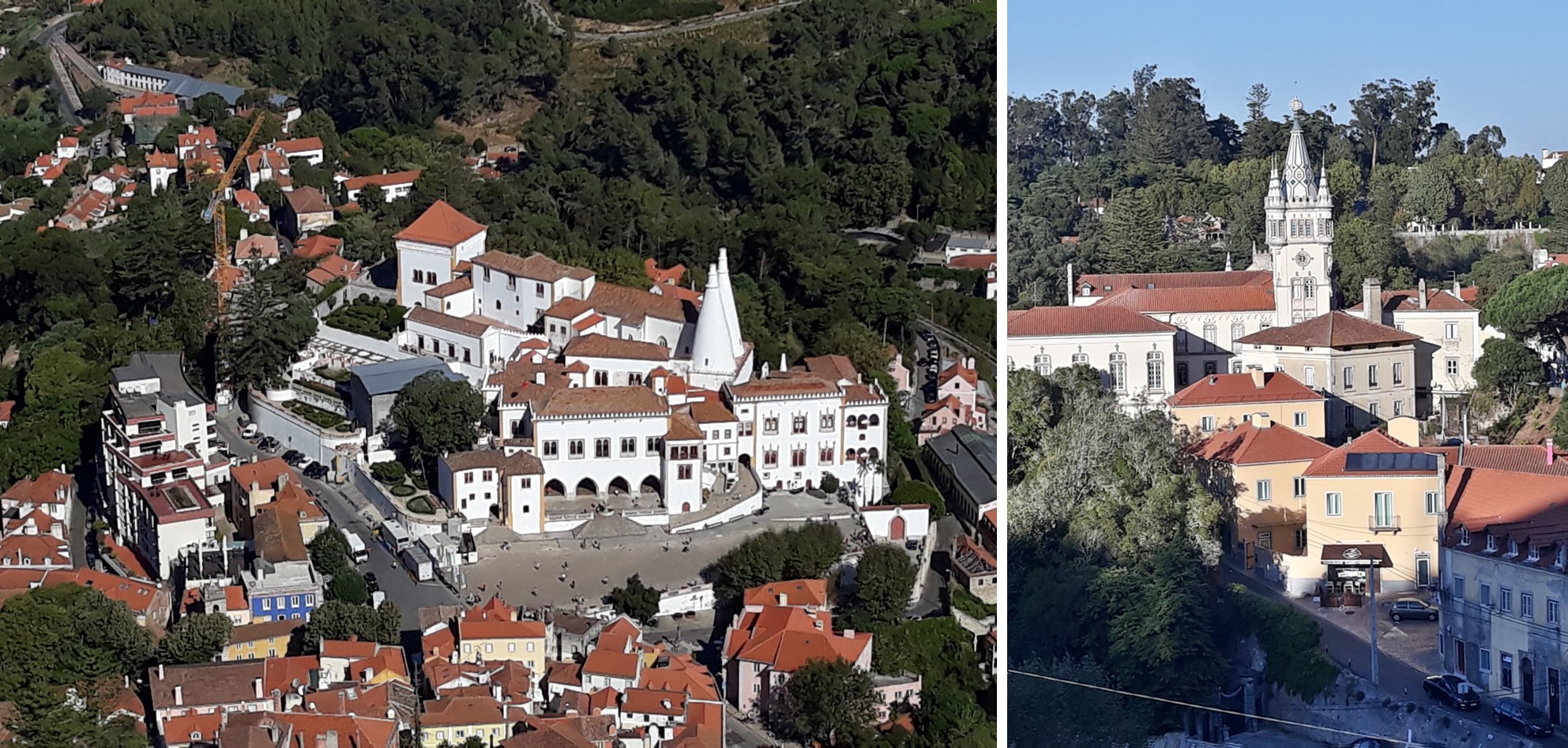
The palace has two huge chimneys (about 30 meters high) that are iconic of the Villa de Sintra. They are part of a large kitchen and are the only ones of this kind existing throughout Europe. In fact, from the Castillo de los Moros the chimneys of the National Palace were clearly visible.
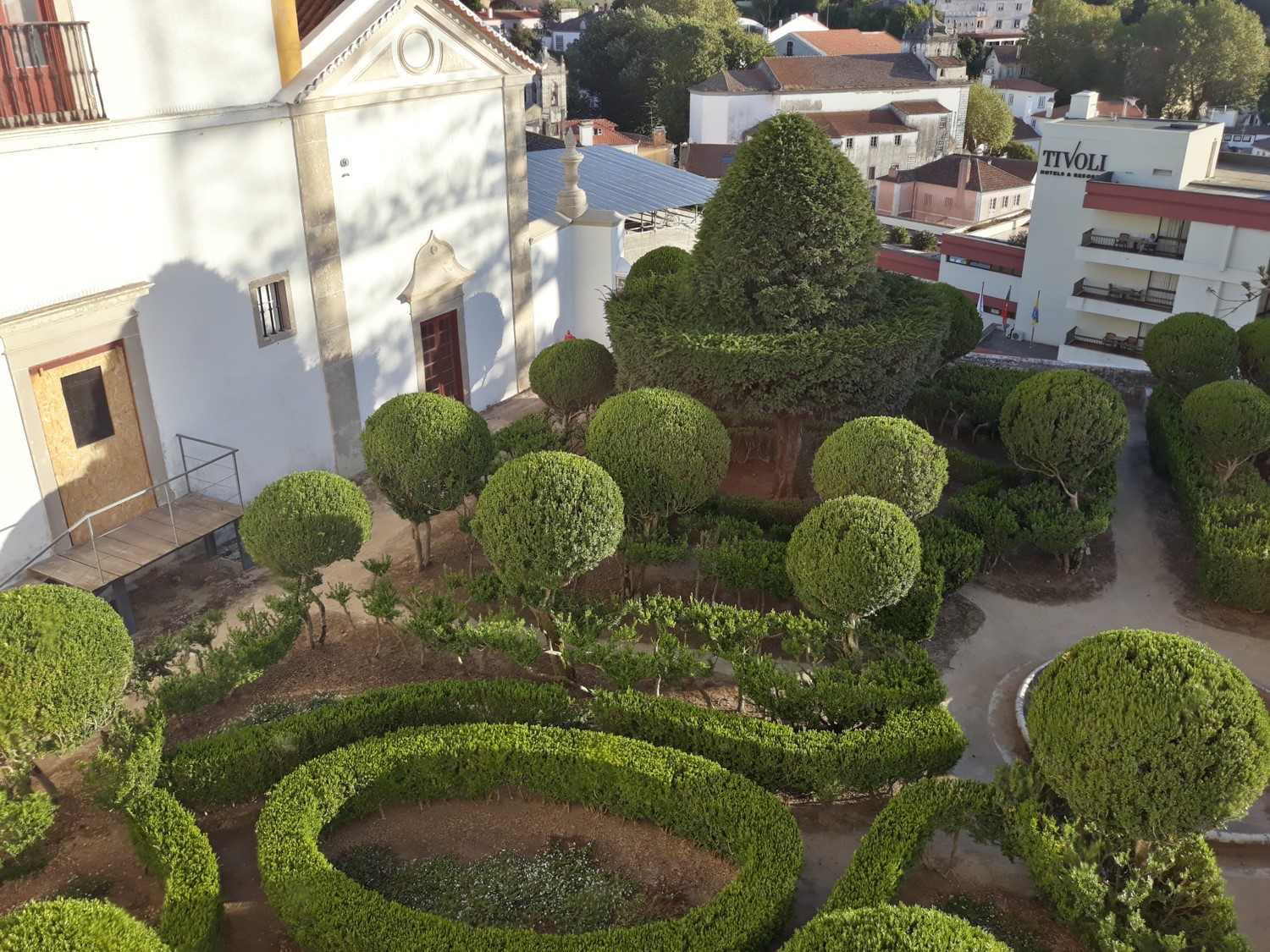
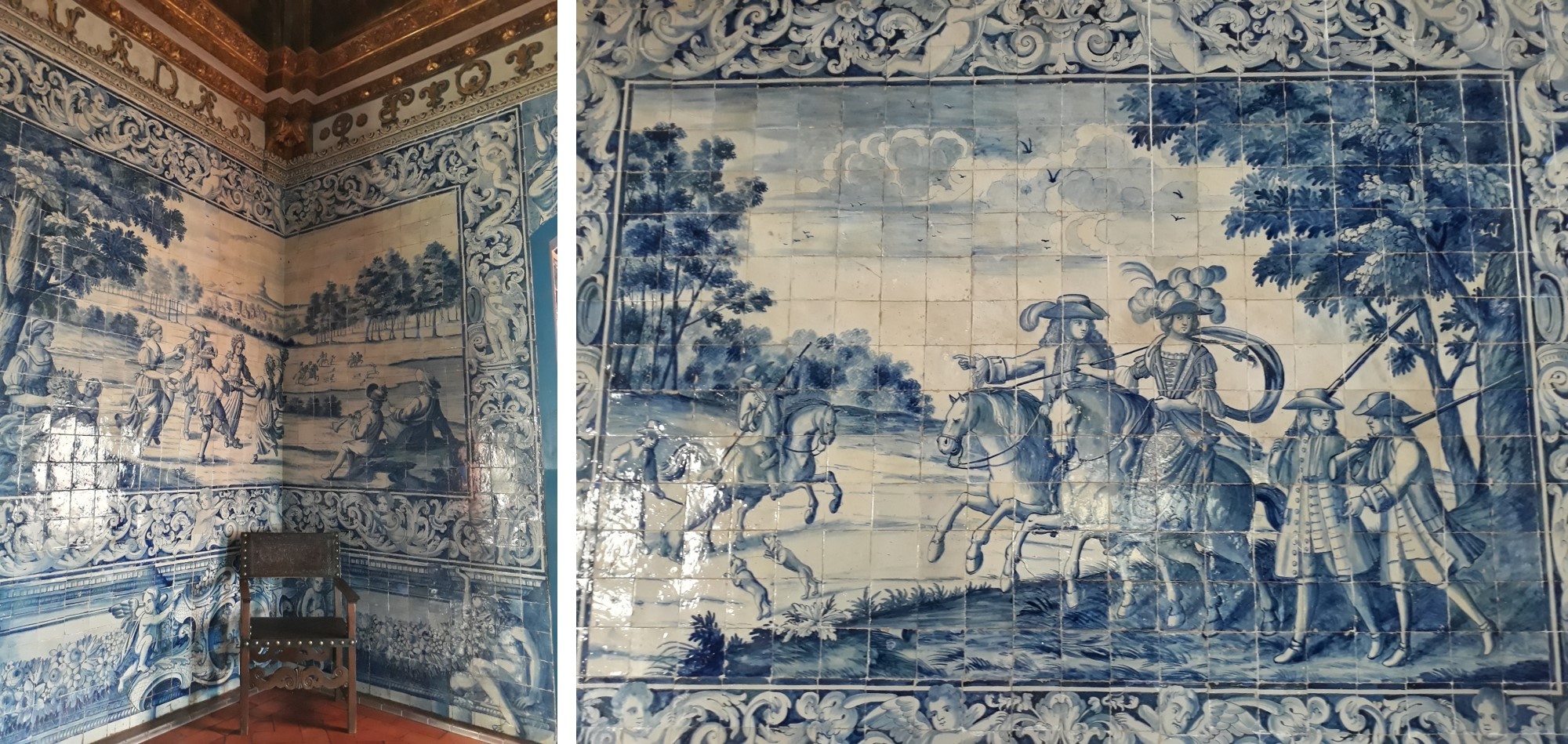
On our tour of the various buildings that make up the palace, you can see panels of Mudejar tiles, making them the largest collection of tile panels under one roof in all of Portugal.
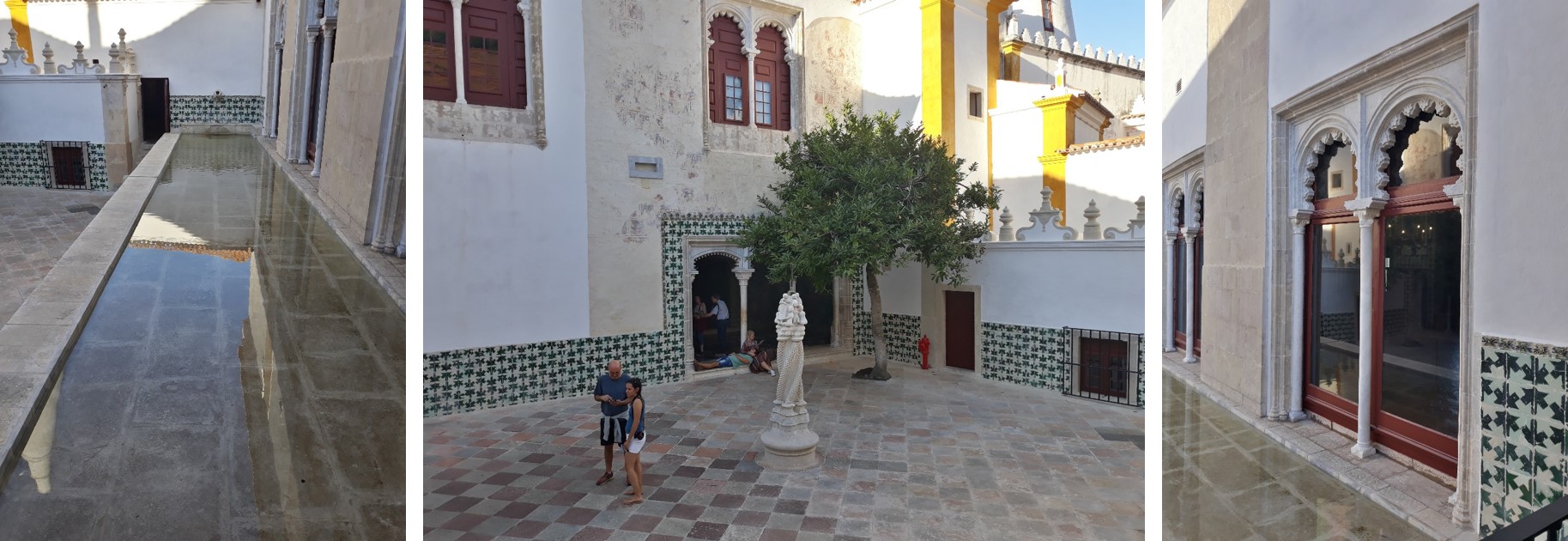
For many years, it was the Residential Palace of kings and nobles. King Afonso V was born and died in this palace.
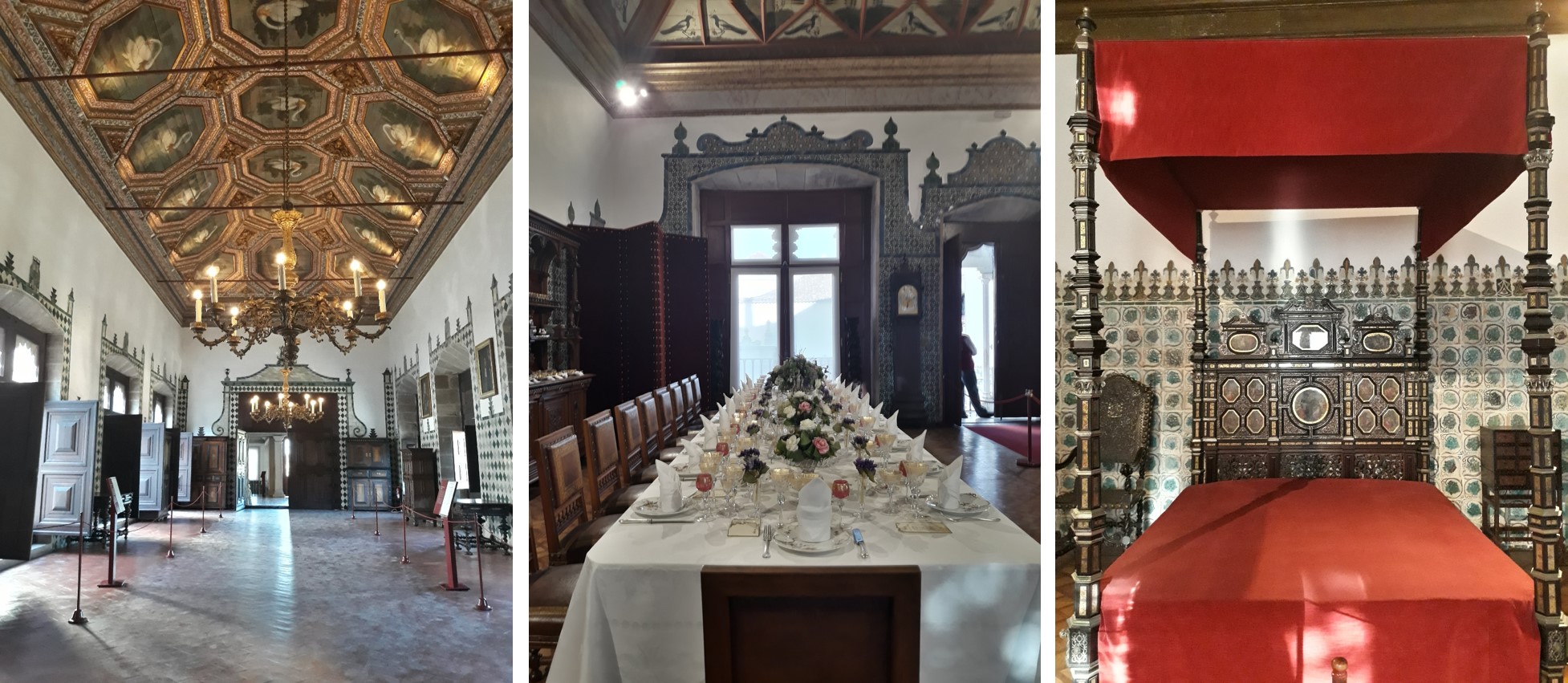
The National Palace of Sintra is located practically in the center of the town and urban center. Residences and businesses surround it and the railway station is a few steps away. It was great decision to visit the National Palace as our last stop in Sintra before returning to Lisbon.
